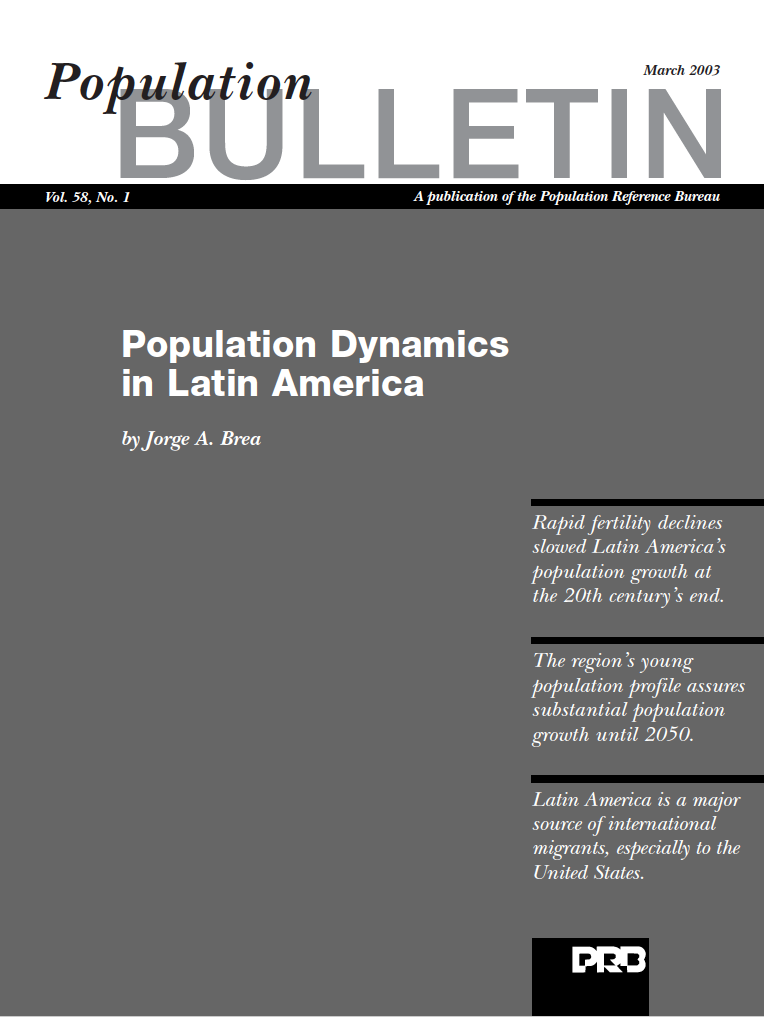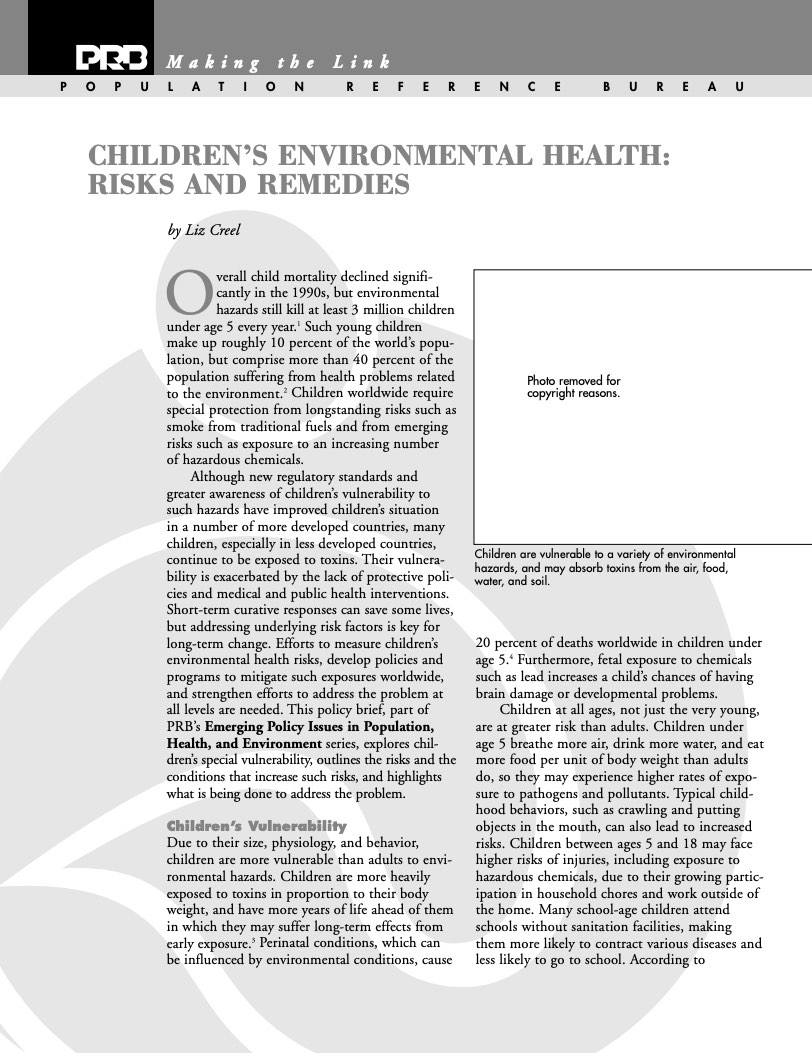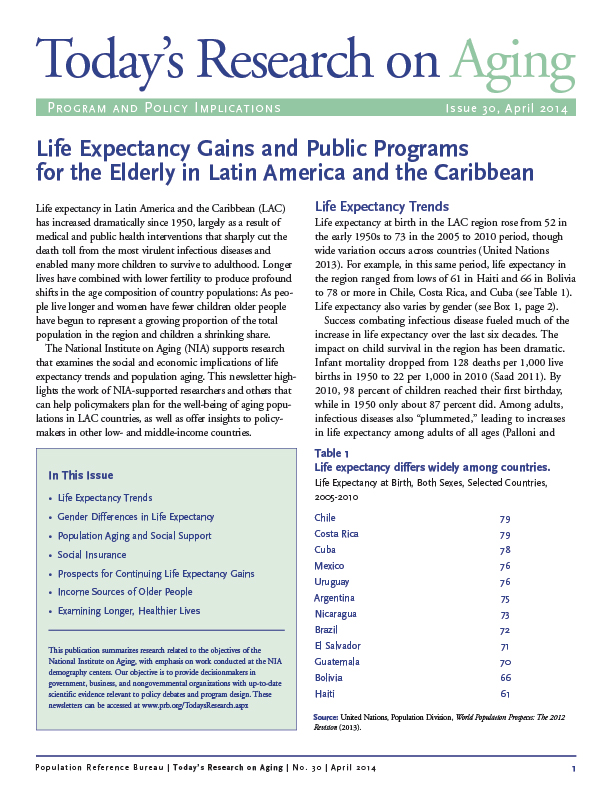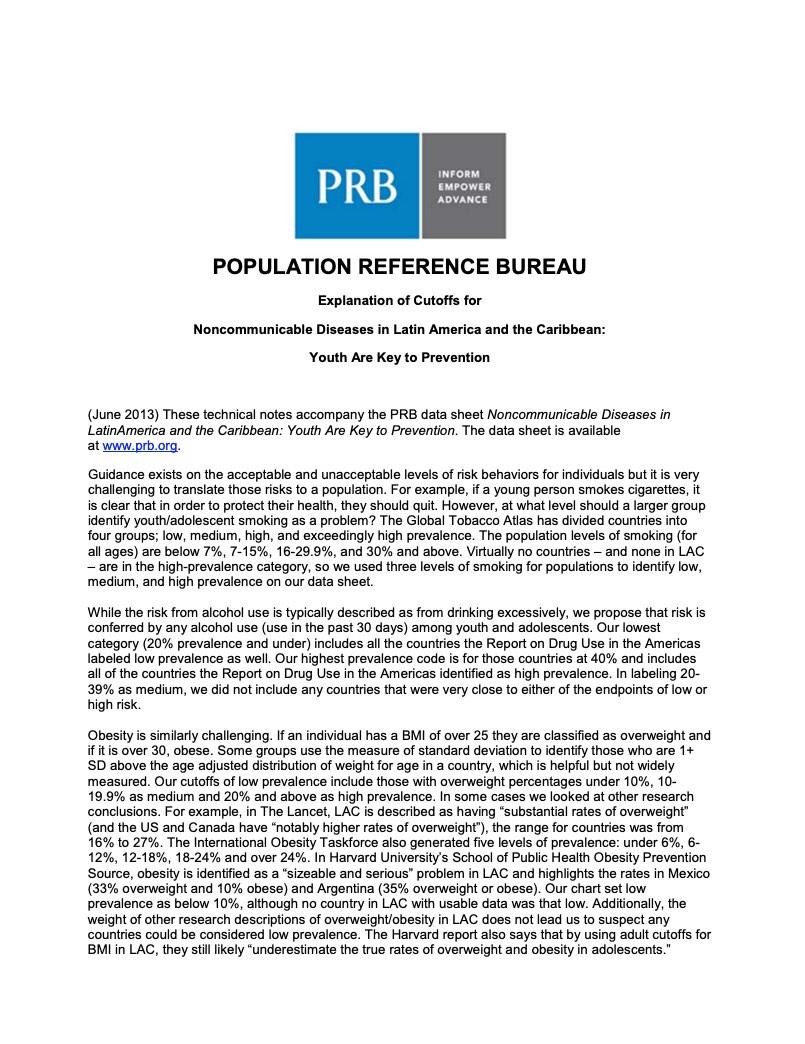17 Search Results Found For : "Uruguay"

The Graying of Latin America

Population Bulletin, vol. 58, no. 1. The Graying of Latin America
South American Transition to Low Fertility Spreads to Paraguay
(2010) Paraguay does not seem a likely candidate for rapid fertility decline: The population is poorer, more rural, and has lower educational levels than its neighboring countries.

Children’s Environmental Health: Risks and Remedies
(2002) Overall child mortality declined significantly in the 1990s, but environmental hazards still kill at least 3 million children under age 5 every year.1 Such young children make up roughly 10 percent of the world's population, but comprise more than 40 percent of the population suffering from health problems related to the environment.2

Project: Demography and Economics of Aging and Alzheimer’s Disease
Life Expectancy Gains and Public Programs for the Elderly in Latin America and the Caribbean
Life expectancy in Latin America and the Caribbean (LAC) has increased dramatically since 1950, largely as a result of medical and public health interventions that sharply cut the death toll from the most virulent infectious diseases and enabled many more children to survive to adulthood.

Project: Combatting Noncommunicable Disease Risk Factors in Youth
Data Sheet Explanation of Cut-Offs: Noncommunicable Diseases in Latin America and the Caribbean
(2013) The four major NCDs—cardiovascular disease, most cancers, diabetes, and chronic respiratory diseases—will account for approximately 81 percent of deaths in Latin America and the Caribbean by 2030, and 89 percent of all deaths in high-income countries.
